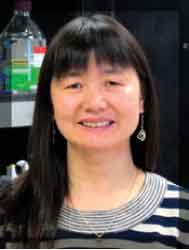Abstract
Obesity is a pandemic problem worldwide. Dietary polyphenolic compounds show promise in preventing obesity. Resveratrol (RSV), one of the most extensively studied polyphenol compounds, has been shown to exert anti-obesity effects in various animal studies and also in several human studies. The fat-lowering effects of RSV may result from its ability to inhibit adipogenesis, suppress lipogenesis, stimulate lipolysis, promote apoptosis and increase fatty acid oxidation and thermogenesis; as well as the recently demonstrated induction of the browning of white adipose tissue. These anti-obesity effects of RSV likely depend on its ability to activate AMP-activated protein kinase, a key enzyme regulating cellular energy metabolism. Consumption of fruits such as berries, grapes and nuts, which contain high levels of RSV and other polyphenols, might help to reduce obesity.
Obesity and its consequences
Obesity is a pandemic and serious public health problem worldwide. Excessive fat accumulation is associated with the increased risk of Type 2 diabetes mellitus, hypertension, dyslipidemia, cardiovascular diseases and certain cancers. Obesity develops as a result of an imbalance between dietary energy intake and energy consumption, and reducing dietary energy intake or increasing energy consumption prevents obesity. Unfortunately, the prevalence of palatable, energy-intense foods makes reduction of calorie intake particularly challenging. To make things worse, modern lifestyle requires less and less physical activities which burn calories, and excessive energy is accumulated as adipose tissue, leading to the current obesity epidemic. Recent studies suggest that dietary polyphenolic compounds, which enhance lipid oxidation and body energy expenditure, can be used for preventing and managing obesity.[Citation1]
Polyphenolic compounds are widely found in various berries, grapes, nuts and other foods of plant origins. Among natural polyphenolics, resveratrol (RSV) has attracted significant interest in recent years. Up to date, RSV has been shown to exert various health beneficial effects, among which include reducing oxidative stress and inflammation, curbing the incidence of cancers and cardiovascular diseases, and preventing obesity and diabetes.[Citation2] Here, we compile evidences about the potential link between dietary RSV and the prevention of obesity.
Anti-obesity action of RSV
A large body of literatures point to the anti-obesity action of RSV. Dietary RSV reduced body weight gain and fat mass in mice [Citation3] and decreased adipose tissue weight in rats [Citation4] when challenged with a high-energy diet, with one exception that a low dose (100 mg/kg of food) of RSV caused an increase of body weight gain in mice.[Citation5] In addition, dietary RSV decreased visceral fat mass and backfat thickness in pigs.[Citation6,Citation7] Furthermore, administration of RSV (500 mg per day) for 90 days reduced body weight, body mass index and fat mass in patients with diagnosis of metabolic syndrome.[Citation8] Consistently, RSV supplementation (150 mg per day) for 30 days decreased adipocyte sizes in the abdominal subcutaneous adipose tissue of healthy obese men.[Citation9] In contrast, RSV had no effect on body weight and fat mass in healthy obese men [Citation10] and nonobese women.[Citation11] The inconsistency in these human studies might be due to various factors such as the dose of RSV (ranging from 75 to 2000 mg/d), the duration of RSV administration, the relatively large variations associated with human studies and the metabolic healthiness of human subjects, including lean, healthy obese and obese with metabolic syndrome.
Mechanisms contributing to anti-obesity effects of RSV
Although mechanisms in which RSV exerts anti-obesity effects are not completely understood, several biological processes such as adipogenesis, lipogenesis, lipolysis, apoptosis, fatty acid oxidation, thermogenesis and browning of white adipose tissue (WAT) have been implicated in the fat-lowering effects of REV.
RSV inhibits adipogenesis and lipogenesis
Adipogenesis and lipogenesis contribute to obesity. In 3T3-L1 preadipocytes, RSV (100 μM) attenuated mitotic clonal expansion and terminal adipogenic differentiation by downregulation of key adipogenic genes, including peroxisome proliferator-activated receptor gamma (PPARγ), CCAAT/enhancer binding protein-alpha (C/EBPα) and adipocyte protein 2 (aP2).[Citation12] Meanwhile, RSV (20 or 40 μM) suppressed lipid accumulation and the expression of PPARγ and aP2 in mouse stromal vascular cells (SVCs), while low concentration (10 μM) of RSV had no effect.[Citation3] In addition, RSV (25 or 50 μM) inhibited lipogenesis of human SGBS cells through inhibiting the activity of acetyl-CoA carboxylase, a rate-limiting enzyme in lipogenesis.[Citation13] The inhibition of adipogenesis and lipogenesis by RSV was partially mediated by suppression of insulin signaling and activation of AMP-activated protein kinase (AMPK) α1.[Citation12,Citation13]
RSV stimulates lipolysis
Lipolysis, the breakdown of triacylglycerol in adipocytes to release free fatty acids and glycerol, is regulated by two major enzymes: adipose triglyceride lipase (ATGL) and hormone-sensitive lipase (HSL). RSV promoted lipolysis in 3T3-L1 adipocytes and human SGBS cells, as well as epididymal adipose tissue of mice, mainly through enhancing ATGL expression,[Citation14] and AMPK might be involved in RSV-enhanced lipolysis.[Citation14] Similarly, RSV (50 μM) increased glycerol release and ATGL expression in porcine adipocytes.[Citation15] Meanwhile, HSL expression was boosted in epididymal fat pad of obese Zucker rats treated with RSV (15 mg/kg body weight daily).[Citation16] Consistent with cell culture and animal studies, in mature human adipocytes isolated from subcutaneous abdominal adipose tissue, RSV (100 μM) improved isoproterenol-induced lipolysis.[Citation17]
RSV induces apoptosis in adipocytes
The induction of apoptosis in adipocytes reduces adipose mass. Several studies demonstrated the potential apoptotic effect of RSV in 3T3-L1 cells,[Citation18] mouse primary adipocytes [Citation19] and porcine preadipocytes.[Citation20] RSV-induced apoptosis in adipocytes might be mediated through activation of AMPKα1 [Citation19] or upregulation of SIRT1 expression.[Citation20] Generally, the apoptotic effect of RSV is only observed at high concentrations (25 ~ 400 μM), which are unlikely to achieve under physiological conditions through dietary intake of RSV or other polyphenolic compounds.
RSV increases fatty acid oxidation and thermogenesis
Increase of fatty acid oxidation and thermogenesis in adipose tissue dissipates surplus energy, thus reducing fat mass. RSV (1 or 4 g/kg of food) increased oxygen consumption and energy production and decreased respiratory exchange rate (RER), suggesting elevated lipid oxidation at the whole body level.[Citation3,Citation21] Meanwhile, RSV promoted the expression of genes involved in oxidation and thermogenesis, including PPARγ coactivator 1 alpha (PGC-1α) and uncoupling protein 1 (UCP1) in interscapular brown adipose tissue (BAT),[Citation21,Citation22] 3T3-L1 adipocytes and primary adipocytes derived from mouse embryonic fibroblasts.[Citation23] Such effects appeared to be partially mediated by SIRT1,[Citation21,Citation22] which requires further studies.
RSV induces browning of WAT
Besides white fat and brown fat, a third type of fat, “beige fat,” was discovered fairly recently.[Citation24] Similar to brown adipocytes, beige adipocytes express UCP1 to dissipate energy. Thus, inducing the development of beige adipocytes in WAT, so-called “browning,” helps to reduce obesity. Consistently, RSV (1 g/kg of food) induced beige adipogenesis in vivo along with the appearance of multiocular adipocytes, increased UCP1 expression and enhanced fatty acid oxidation.[Citation3] In addition, RSV (10 μM) increased mRNA and/or protein expression of brown adipocyte markers, activated AMPKα1 and enhanced oxygen consumption in differentiated SVC isolated from inguinal WAT of mice. However, these changes were absent in cells lacking AMPKα1, suggesting the mediatory role of AMPKα1 in RSV-induced browning of WAT in mice.[Citation3] In addition, RSV-induced change in the polarity of macrophages might elevate the level of catecholamines, which contributed to the browning of WAT.[Citation25] Altogether, these data demonstrate a novel browning role of RSV in WAT, which contributes to the anti-obesity effects of RSV.
Implications and future directions
Mechanisms of RSV action
While there are concrete evidences supporting the anti-obesity effects of RSV, different mechanisms have been proposed. Indeed, RSV activates AMPK,[Citation3] and activation of AMPK is known to promote lipolysis, fatty acid oxidation, thermogenesis and the browning of WAT.[Citation3,Citation25,Citation26] In addition, RSV also activates SIRT1, and AMPK and SIRT1 are known to cross-talk and synergize each other.[Citation27] Moreover, the mechanisms other than AMPK activation as well as their interaction with AMPK should be further explored.
Bio-availability and metabolism of RSV
It has been reported that there is a high absorption rate but a very low bio-availability of oral RSV in humans owning to the rapid metabolism of RSV.[Citation28] Thus, the development of new delivery methods and formulations of RSV to improve its bio-availability and efficacy should be further studied. Meanwhile, the dose, use frequency and the metabolic healthiness of human subjects should also be carefully controlled in order to yield consistent results.
Synergistic effects of RSV with other polyphenols
Combination of RSV and quercetin enhanced the individual effects of these molecules on inhibition of adipogenesis and induction of apoptosis in 3T3-L1 adipocytes,[Citation29] and on lipolysis in rat WAT,[Citation30] suggesting the synergistic effects of RSV with other polyphenols. In addition, polyphenolic compounds prepared from tea, coffee and other foods, which have minimal RSV content, also show anti-obesity effects,[Citation1] suggesting the generic effects of polyphenolic compounds in reducing obesity. Furthermore, RSV supplements used in anti-obesity studies of animals and humans contain high levels of other polyphenolics, further supporting the general anti-obesity effects of polyphenolics. Up to now, most available studies use RSV or polyphenol extracts, and more studies using whole fruits and other polyphenol-rich foods are needed, especially human studies.
In conclusion, strong evidences from in vitro cell culture studies and in vivo animal studies, as well as limited human studies, point to the preventive effects of RSV and other polyphenolic compounds on obesity, and dietary polyphenolics may exert anti-obesity effects through inhibiting adipogenesis and lipogenesis, stimulating lipolysis, promoting apoptosis, increasing fatty acids oxidation and thermogenesis, and inducing browning of WAT, which may depend on the ability of RSV to activate AMPK. Based on the available literature, there are concrete evidences supporting the anti-obesity effects of dietary polyphenolics in rodents and cell models, and more studies should be conducted to confirm this in humans.
Financial & competing interests disclosure
The paper was funded by a grant from US National Institutes of Health (R01HD067449) received by M. Du. M. Du also received an Emerging Research Issues Internal Competitive Grant from the Agricultural Research Center at WSU. S. Wang is supported by the National Natural Science Foundation of China (31372397). M. Zhu is supported by National Processed Raspberry Council. The authors have no other relevant affiliations or financial involvement with any organization or entity with a financial interest in or financial conflict with the subject matter or materials discussed in the manuscript apart from those disclosed.
Additional information
Notes on contributors

Songbo Wang
Songbo Wang

Mei-Jun Zhu
Meijun Zhu

Min Du
Min Du
References
- Wang S, Moustaid-Moussa N, Chen L, et al. Novel insights of dietary polyphenols and obesity. J Nutr Biochem. 2014;25(1):1–18.
- Novelle MG, Wahl D, Dieguez C, et al. Resveratrol supplementation: where are we now and where should we go? Ageing Res Rev. 2015;21:1–15.
- Wang S, Liang X, Yang Q, et al. Resveratrol induces brown-like adipocyte formation in white fat through activation of AMP-activated protein kinase (AMPK) alpha1. Int J Obes (Lond). 2015;39(6):967–976.
- Alberdi G, Rodriguez VM, Miranda J, et al. Changes in white adipose tissue metabolism induced by resveratrol in rats. Nutr Metab (Lond). 2011;8(1):29.
- Pearson KJ, Baur JA, Lewis KN, et al. Resveratrol delays age-related deterioration and mimics transcriptional aspects of dietary restriction without extending life span. Cell Metab. 2008;8(2):157–168.
- Zhang C, Luo J, Yu B, et al. Effects of resveratrol on lipid metabolism in muscle and adipose tissues: a reevaluation in a pig model. J Funct Foods. 2015;14:590–595.
- Zhang C, Luo J, Yu B, et al. Dietary resveratrol supplementation improves meat quality of finishing pigs through changing muscle fiber characteristics and antioxidative status. Meat Sci. 2015;102:15–21.
- Mendez-del Villar M, Gonzalez-Ortiz M, Martinez-Abundis E, et al. Effect of resveratrol administration on metabolic syndrome, insulin sensitivity, and insulin secretion. Metab Syndr Relat Disord. 2014;12(10):497–501.
- Konings E, Timmers S, Boekschoten MV, et al. The effects of 30 days resveratrol supplementation on adipose tissue morphology and gene expression patterns in obese men. Int J Obes (Lond). 2014;38(3):470–473.
- Timmers S, Konings E, Bilet L, et al. Calorie restriction-like effects of 30 days of resveratrol supplementation on energy metabolism and metabolic profile in obese humans. Cell Metab. 2011;14(5):612–622.
- Yoshino J, Conte C, Fontana L, et al. Resveratrol supplementation does not improve metabolic function in nonobese women with normal glucose tolerance. Cell Metab. 2012;16(5):658–664.
- Mitterberger MC, Zwerschke W. Mechanisms of resveratrol-induced inhibition of clonal expansion and terminal adipogenic differentiation in 3T3-L1 preadipocytes. J Gerontol A Biol Sci Med Sci. 2013;68(11):1356–1376.
- Li S, Bouzar C, Zagotta I, et al. Resveratrol inhibits lipogenesis of 3T3-L1 and SGBS cells by inhibition of insulin signalization and of mitochondrial mass increase. Int J Diabetes Clin Res. 2015;2:25.
- Lasa A, Schweiger M, Kotzbeck P, et al. Resveratrol regulates lipolysis via adipose triglyceride lipase. J Nutr Biochem. 2012;23(4):379–384.
- Shan T, Ren Y, Wang Y. Sirtuin 1 affects the transcriptional expression of adipose triglyceride lipase in porcine adipocytes. J Anim Sci. 2013;91(3):1247–1254.
- Gomez-Zorita S, Fernandez-Quintela A, Lasa A, et al. Effects of resveratrol on obesity-related inflammation markers in adipose tissue of genetically obese rats. Nutrition. 2013;29(11–12):1374–1380.
- Gomez-Zorita S, Treguer K, Mercader J, et al. Resveratrol directly affects in vitro lipolysis and glucose transport in human fat cells. J Physiol Biochem. 2013;69(3):585–593.
- Rayalam S, Yang JY, Ambati S, et al. Resveratrol induces apoptosis and inhibits adipogenesis in 3T3-L1 adipocytes. Phytother Res. 2008;22(10):1367–1371.
- Chen S, Zhou N, Zhang Z, et al. Resveratrol induces cell apoptosis in adipocytes via AMPK activation. Biochem Biophys Res Commun. 2015;457(4):608–613.
- Pang WJ, Xiong Y, Zhang Z, et al. Lentivirus-mediated Sirt1 shRNA and resveratrol independently induce porcine preadipocyte apoptosis by canonical apoptotic pathway. Mol Biol Rep. 2013;40(1):129–139.
- Andrade JM, Frade AC, Guimaraes JB, et al. Resveratrol increases brown adipose tissue thermogenesis markers by increasing SIRT1 and energy expenditure and decreasing fat accumulation in adipose tissue of mice fed a standard diet. Eur J Nutr. 2014;53(7):1503–1510.
- Alberdi G, Rodriguez VM, Miranda J, et al. Thermogenesis is involved in the body-fat lowering effects of resveratrol in rats. Food Chem. 2013;141(2):1530–1535.
- Mercader J, Palou A, Bonet ML. Resveratrol enhances fatty acid oxidation capacity and reduces resistin and Retinol-Binding Protein 4 expression in white adipocytes. J Nutr Biochem. 2011;22(9):828–834.
- Wu J, Bostrom P, Sparks LM, et al. Beige adipocytes are a distinct type of thermogenic fat cell in mouse and human. Cell. 2012;150(2):366–376.
- Rayalam S, Mula R, Karam E, et al. Resveratrol-induced browning of white adipose tissue: macrophages in the loop. FASEB J. 2015;29(1 Supplement):LB273.
- Aguirre L, Fernandez-Quintela A, Arias N, et al. Resveratrol: anti-obesity mechanisms of action. Molecules. 2014;19(11):18632–18655.
- Price NL, Gomes AP, Ling AJ, et al. SIRT1 is required for AMPK activation and the beneficial effects of resveratrol on mitochondrial function. Cell Metab. 2012;15(5):675–690.
- Walle T. Bioavailability of resveratrol. Ann N Y Acad Sci. 2011;1215:9–15.
- Yang JY, Della-Fera MA, Rayalam S, et al. Enhanced inhibition of adipogenesis and induction of apoptosis in 3T3-L1 adipocytes with combinations of resveratrol and quercetin. Life Sci. 2008;82(19–20):1032–1039.
- Arias N, Macarulla MT, Aguirre L, et al. The combination of resveratrol and quercetin enhances the individual effects of these molecules on triacylglycerol metabolism in white adipose tissue. Eur J Nutr. 2015;Feb 11:[ Epub ahead of print]
